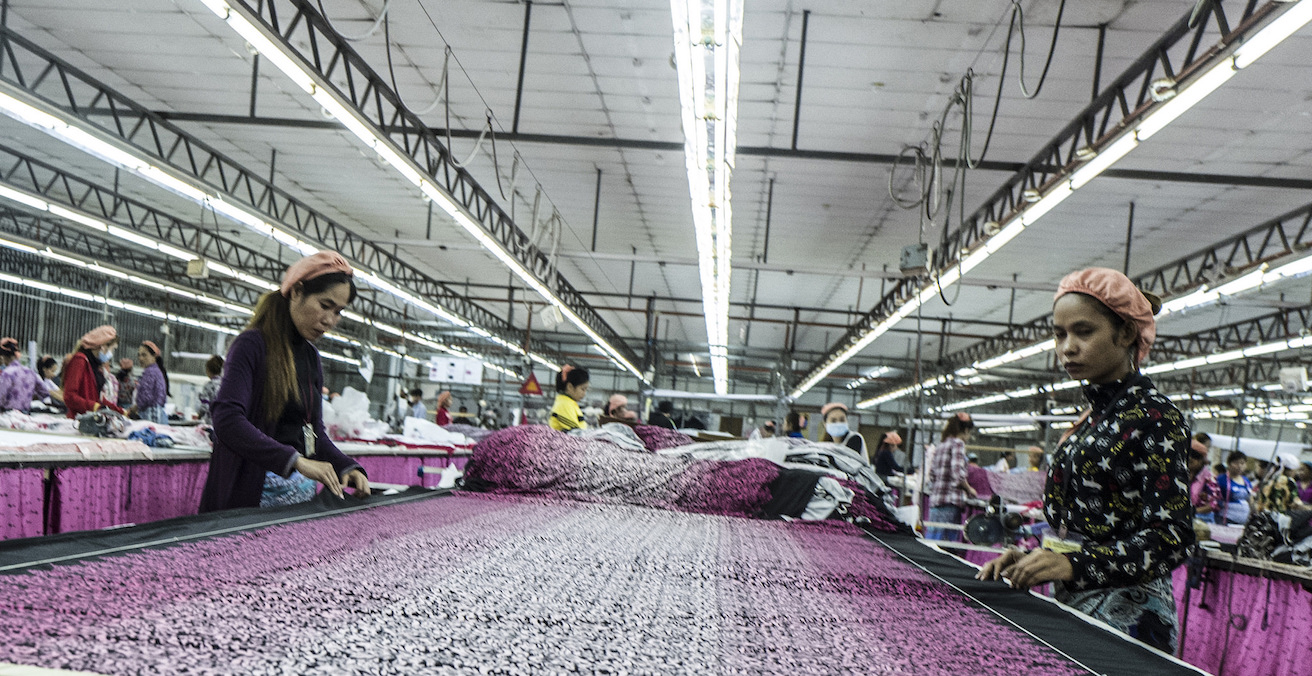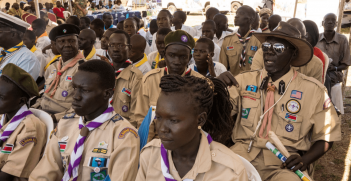The World as a Hostile Workplace

From American film studios to Southeast Asian textile factories, women experience workplace sexual harassment. Now the International Labour Organisation (ILO) is charged with developing a standard to combat the problem.
Last month, the Academy Award-winning producer Harvey Weinstein turned himself in to police in New York City to be arraigned on charges of rape and criminal sexual assault. He is also the subject of ongoing criminal investigations in Los Angeles and London based on claims of sexual harassment, intimidation and violence made by dozens of women.
Certainly, the many credible allegations against Weinstein helped raise awareness about the pervasiveness of sexual harassment in the US, with more than half of working women saying they have been subjected to harassment in the workplace.
The trajectory of his spectacular fall from the Hollywood constellation triggered the ouster of many other high-profile media figures and politicians accused of misconduct, and helped build a more cohesive movement to improve laws and corporate policies against harassment.
But timing is everything, and many in the US have wondered whether the last presidential election would have ended differently had it been held just six months later, as the boys-will-be-boys shrug which greeted allegations of harassment by Donald Trump is no longer viewed by the public as an adequate response to reports of misconduct.
On the same day Weinstein was arraigned, however, an important report about sexual harassment was released to little fanfare. Gender based violence in the Walmart garment supply chain details the experiences of workers in factories in Bangladesh, Cambodia and Indonesia which supply Walmart. The report also explains the risk factors that make such workers vulnerable to gender-based violence, including sexual harassment.
Though women comprise the overwhelming majority of global textile workers, they seldom hold management or supervisory positions. Instead, they generally work in the lowest-wage roles of button machine operator, helpers, checkers and line tailors. Such gendered concentration of the workforce is endemic in the global garment industry and creates the type of power imbalance in which harassment can flourish and generally go unchecked.
Another typical garment industry practice that subjects female workers to harassment is the use of short-term contracts, which leaves workers at constant risk of being fired. This uncertainty allows implicit threats of non-renewal to stifle workers’ ability to report incidents of violence or harassment.
Further, the common industry practice of subcontracting makes it difficult to trace accountability back to the brand.
But even if workers do report harassment, and it is possible to determine the link to a supplier, more than one-third of all nations do not have laws against sexual harassment in the workplace, leaving more than 235 million women workers unprotected.
Now, however, there is an opportunity to define the problem of gender-based violence and harassment in the workplace, and to create a framework for governments, employers, workers and unions to more effectively address it. The International Labour Organization (ILO), meeting in Geneva from 28 May to 6 June, is convening a Standard Setting Committee tasked with ending violence and harassment in the world of work.
By examining both violence directed at women because they are women, and violence which disproportionately impacts women, the ILO is expected to adopt a broad definition of worker, which encompasses those in both the formal and informal economies, and includes all migrant workers, regardless of their legal status in the place of employment.
One area which could greatly benefit from an expansion of ILO standards is the export processing zone, or special economic zone, a prevalent model in Southeast Asia. These zones are frequently exempt from labour laws and typically feature employer-provided housing – generally large dormitories where women who have travelled from rural provinces to find work in urban factories live.
I visited such an export zone several years ago in the Dagon Township of Yangon. All the garment workers I met there were women who worked 12-hour days, six days a week. On their one day off, many of them gathered at a training centre sponsored by the Federation of Trade Unions of Burma to learn English and take turns working their way through software tutorials on the centre’s one computer, in the hope of getting better jobs outside the factory environment.
Although the law requires workers at the factories in the export zone to be at least 15 years old, the women’s faces told a different story. Most were very young. They all deserved the right to fulfil their potential and advance in the world of work as far as their initiative and skills could take them, but I wonder how many of them abandoned their career plans in the intervening years due to the pervasive effects of sexual harassment.
Whether uttered on a Hollywood back lot or on a Phnom Penh factory floor, the phrase “You better come along if you want to continue working here – don’t you know who I am?” has been used to intimidate and terrorise women for too long. The ILO can now help coalesce employment-based attitudes and practices against harassment, to in effect finally reply, “Yes, we know who you are, and we’re not going to take it anymore.”
Sally Tyler is an attorney and policy analyst, based in Washington, DC.
This article was first published in the Policy Forum on 4 June 2018 and is reprinted with permission.





